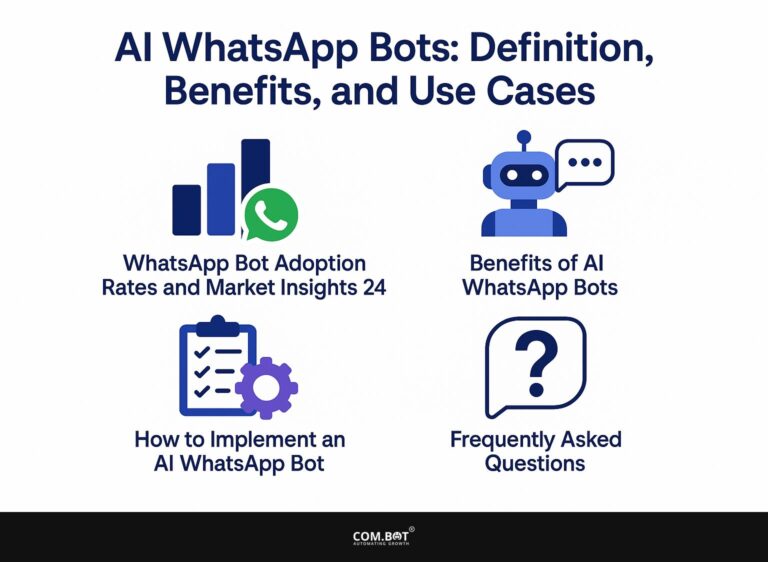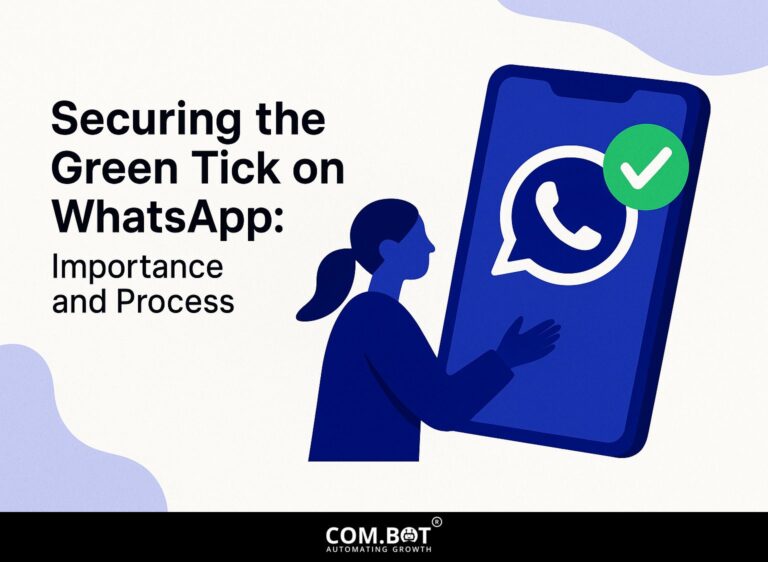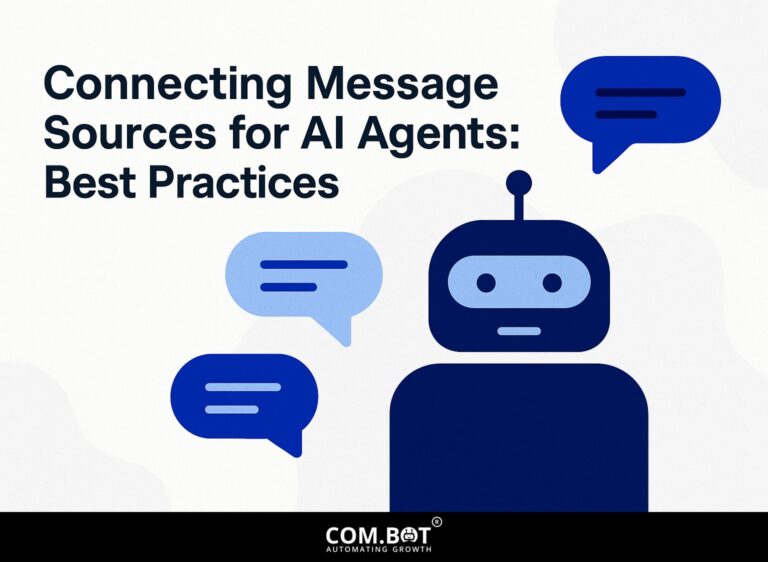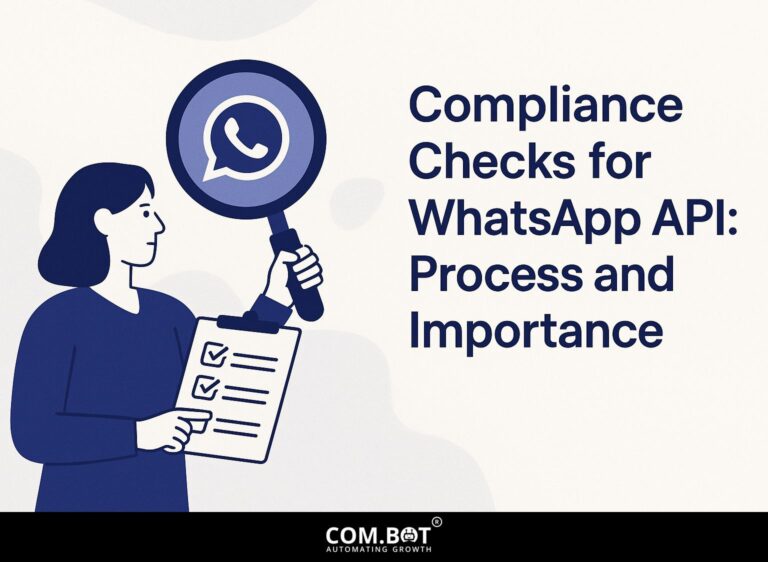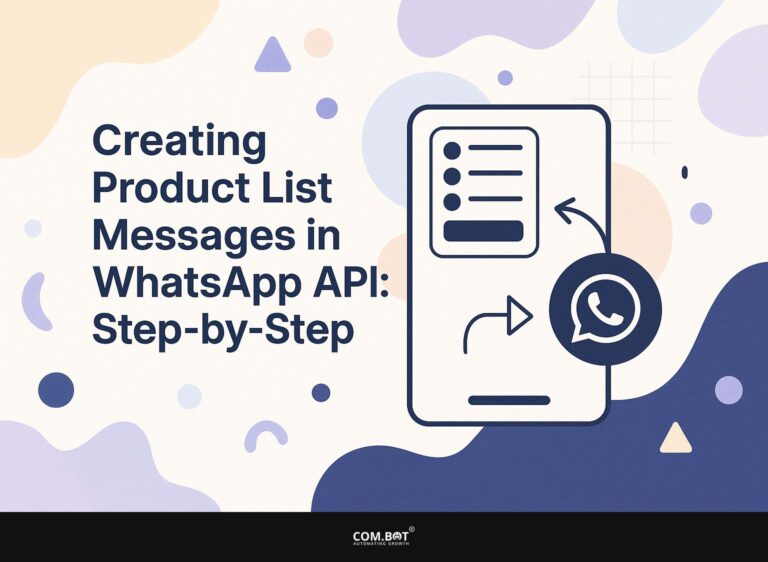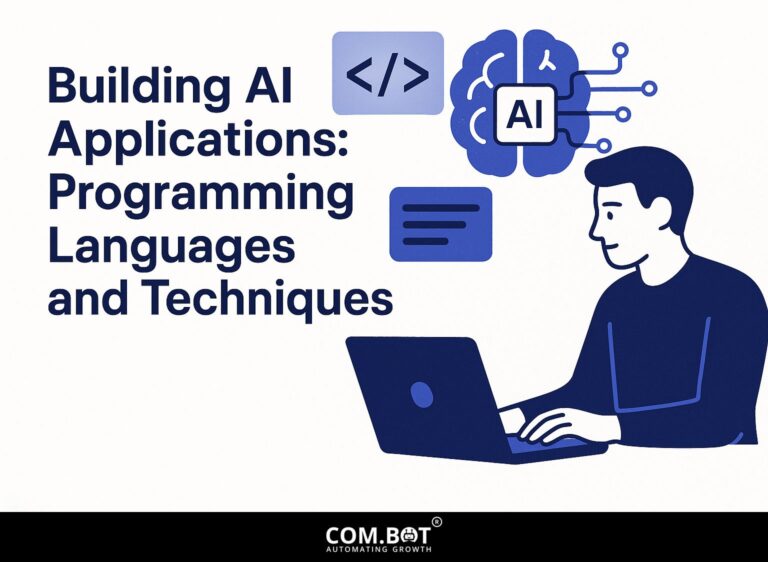Appointment Scheduling with AI Bots: Best Practices
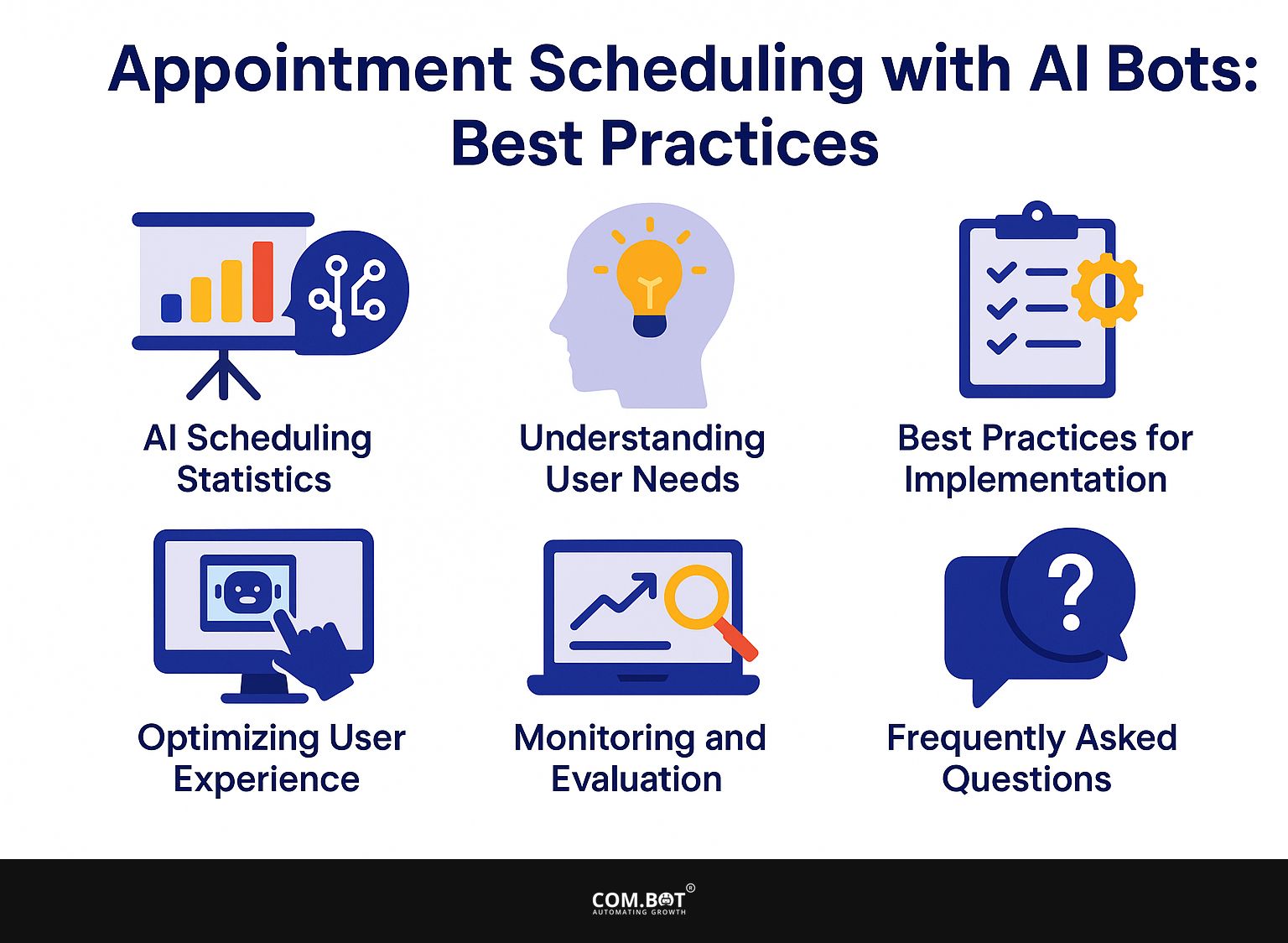
With how quickly things move now, setting appointments quickly is important, and chatbots are taking the lead. These AI bots use natural language processing to easily schedule appointments and automatically send alerts.
This article explores effective methods for using AI in appointment scheduling, so you can meet user needs and improve your service. Learn how to improve your methods and use technology for smooth communication.
Key Takeaways:
- Utilizing AI bots for appointment scheduling can improve efficiency and save time for both businesses and customers.
- For successful implementation, know who the audience is and regularly collect feedback to make it better.
- Tailoring plans to individual users and keeping track of key metrics are important for making the user experience better and regularly boosting AI bot performance.
- 1 AI Appointment Scheduling Statistics
- 2 Understanding User Needs
- 3 Best Practices for Implementation
- 4 Optimizing User Experience
- 5 Monitoring and Evaluation
- 6 Frequently Asked Questions
- 6.1 1. What is appointment scheduling with AI bots and how does it work?
- 6.2 2. What are the benefits of using AI bots for appointment scheduling?
- 6.3 3. How do AI bots make sure appointment scheduling is correct?
- 6.4 4. Can AI bots integrate with my existing appointment scheduling system?
- 6.5 5. Are there any security concerns when using AI bots for appointment scheduling?
- 6.6 6. How can AI bots improve customer experience during the appointment scheduling process?
1. Overview of AI Technology
AI technology, especially natural language processing (NLP), is foundational in creating effective chatbots for appointment scheduling. NLP systems improve how users interact by interpreting and handling human language in a way that seems natural.
For instance, Google Dialogflow uses machine learning to recognize user intents, allowing it to respond to diverse queries seamlessly. Microsoft Bot Framework uses natural language processing to help developers create sophisticated bots that can efficiently handle appointment scheduling.
With these tools, businesses can set up scheduling, confirm appointments, and respond to common questions, all while offering a user-friendly chat experience.
For an extensive analysis of this trend, our comprehensive study on Rule-Based vs. AI Bots: Differences and Use Cases examines how these technologies compare and complement each other in various applications.
AI Appointment Scheduling Statistics
AI Appointment Scheduling Statistics
Appointment Scheduling Impact: Customer and User Preferences
Appointment Scheduling Impact: Efficiency and Growth
Appointment Scheduling Impact: Revenue and Business Outcomes
AI Appointment Scheduling Statistics shows important information about what customers like, improvements in performance, and results influenced by AI in scheduling systems. This information shows the increasing use of online booking systems in different areas, demonstrating how AI is changing appointment scheduling.
Customer and User Preferences indicate a clear shift towards digital solutions. Specifically, 67% of patients prefer online booking, underlining the convenience and accessibility it offers compared to traditional methods. Similarly, 72% of employers use online booking for travel arrangements, suggesting a broader trend in various professional settings. Additionally, 60% of salons and spas report a significant rate of online bookings, reflecting a shift in consumer behavior towards digital platforms for personal care appointments.
Efficiency and Growth metrics highlight the operational benefits of AI-driven scheduling. Notably, the implementation of AI has led to a 50.7% reduction in no-show rates. This large drop is due to automatic notifications and simpler ways to change appointments. AI also helps to cut down on wait times by 5.7 minutes, enhancing customer satisfaction and service efficiency. The market for appointment scheduling is growing rapidly, with an expected compound annual growth rate (CAGR) of 13.1% from 2019-2026, indicating sustained investment and adoption of these technologies.
Revenue and Business Outcomes demonstrate the financial advantages of online booking systems. Businesses using online booking have seen an average revenue increase of 27% “”, thanks to more efficient processes and improved customer interaction. More impressively, local businesses could experience a potential revenue surge of 120%, showing how AI scheduling tools can change the way we organize our time. Additionally, 34% of appointment slots are booked after working hours, signifying the flexibility and convenience these systems offer to consumers, leading to higher booking rates and improved business utilization.
In summary, the AI Appointment Scheduling Statistics data emphasizes the significant impact of AI on enhancing user experiences, operational efficiency, and revenue generation. The use of advanced scheduling tools in many industries highlights the need to include these solutions to satisfy changing customer needs and support business growth.
2. Benefits of Using AI for Scheduling
Using AI for appointment scheduling can make booking quicker by cutting down the time spent on admin work and can increase customer happiness by up to 40%.
To do this well, use tools like Calendly for simple calendar management. This makes setting appointments easier and sends alerts, reducing missed appointments by 30%.
Pair it with AI-driven chatbots like Drift to engage clients 24/7, allowing users to book appointments without direct interaction. For deeper insights into how AI bots enhance customer support, you can explore their benefits and satisfaction levels.
Data from these platforms can show the busiest booking periods, allowing you to adjust your schedule. This mix makes the process easier and encourages a quicker way to connect with customers.
Understanding User Needs
Knowing what users need is important for creating AI bots that can successfully handle appointments and improve how users interact with them. To gain deeper insights, exploring tools like the Com.bot Conversational Analytics Dashboard can be beneficial, as it provides valuable data on user interactions and preferences.
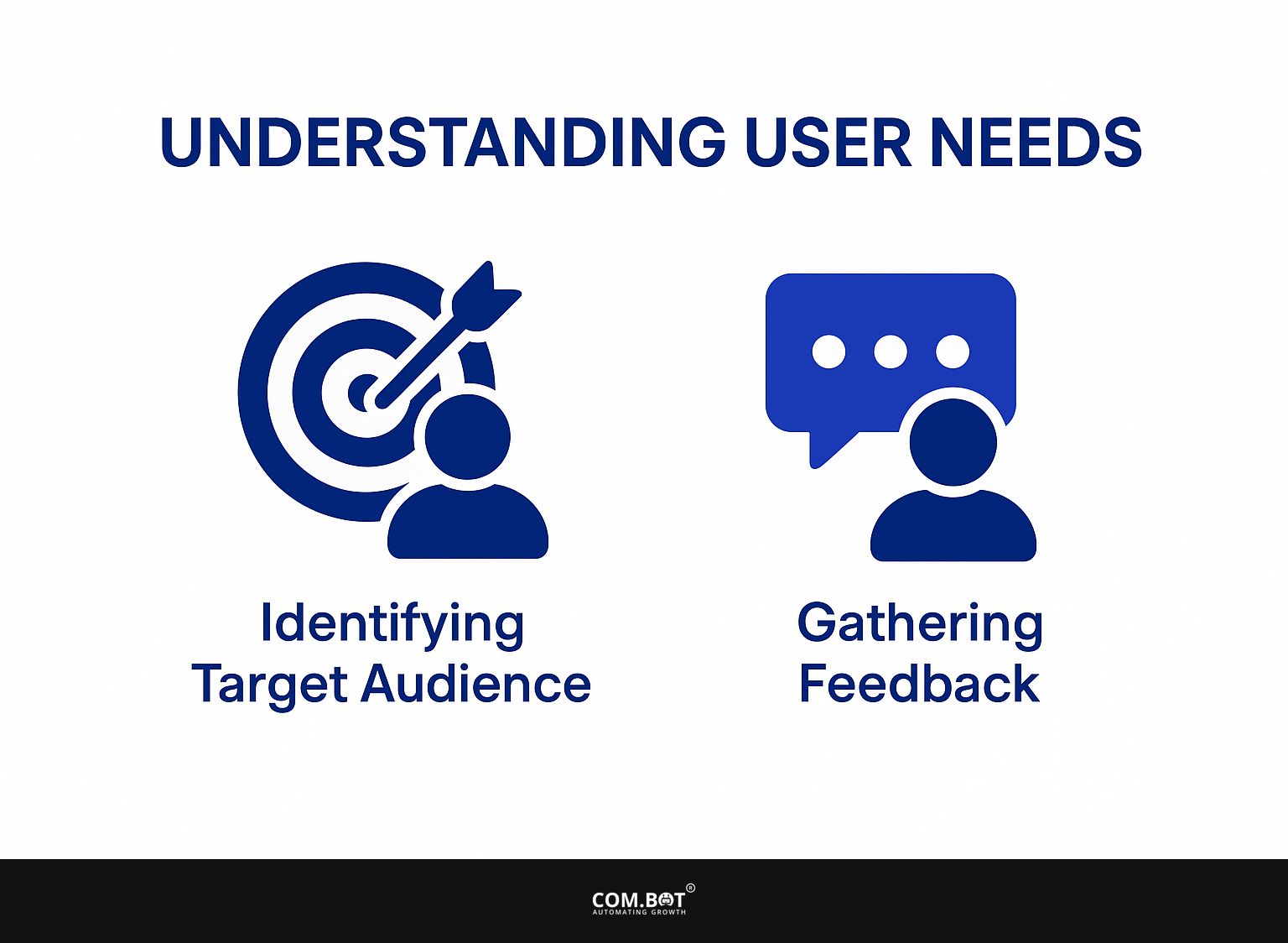
1. Identifying Target Audience
To put an AI scheduling bot into use, companies should start by figuring out who they want to reach. They need to consider how users act and look at demographic information. Begin by carrying out surveys to collect detailed information about what your audience likes and dislikes.
You can use Google Forms or SurveyMonkey to build customized questionnaires. Next, analyze customer data using CRM platforms like HubSpot or Salesforce to identify trends in purchasing behavior and engagement.
Segment your audience by service or product types, ensuring that your bot’s messaging aligns with their unique needs. Knowing the details helps aim at the right audience and tailor the experience for each user.
2. Gathering Feedback for Improvement
Collecting feedback from users often is important to improve AI bots and make them work better in setting up appointments. To gather useful feedback, use surveys after interactions and monitor performance with tools like Google Analytics.
For instance, after each scheduled appointment, send users a brief survey via email, asking them to rate their experience and suggest improvements. Combine this qualitative data with quantitative metrics, such as appointment completion rates and user engagement time on the platform.
Reviewing this information can guide better decisions, like changing user interfaces or cutting down response times. These steps can significantly improve user satisfaction and make the bot work better.
Best Practices for Implementation
Using AI bots for scheduling appointments successfully involves following established guidelines to make sure they work well and fit into the system smoothly.
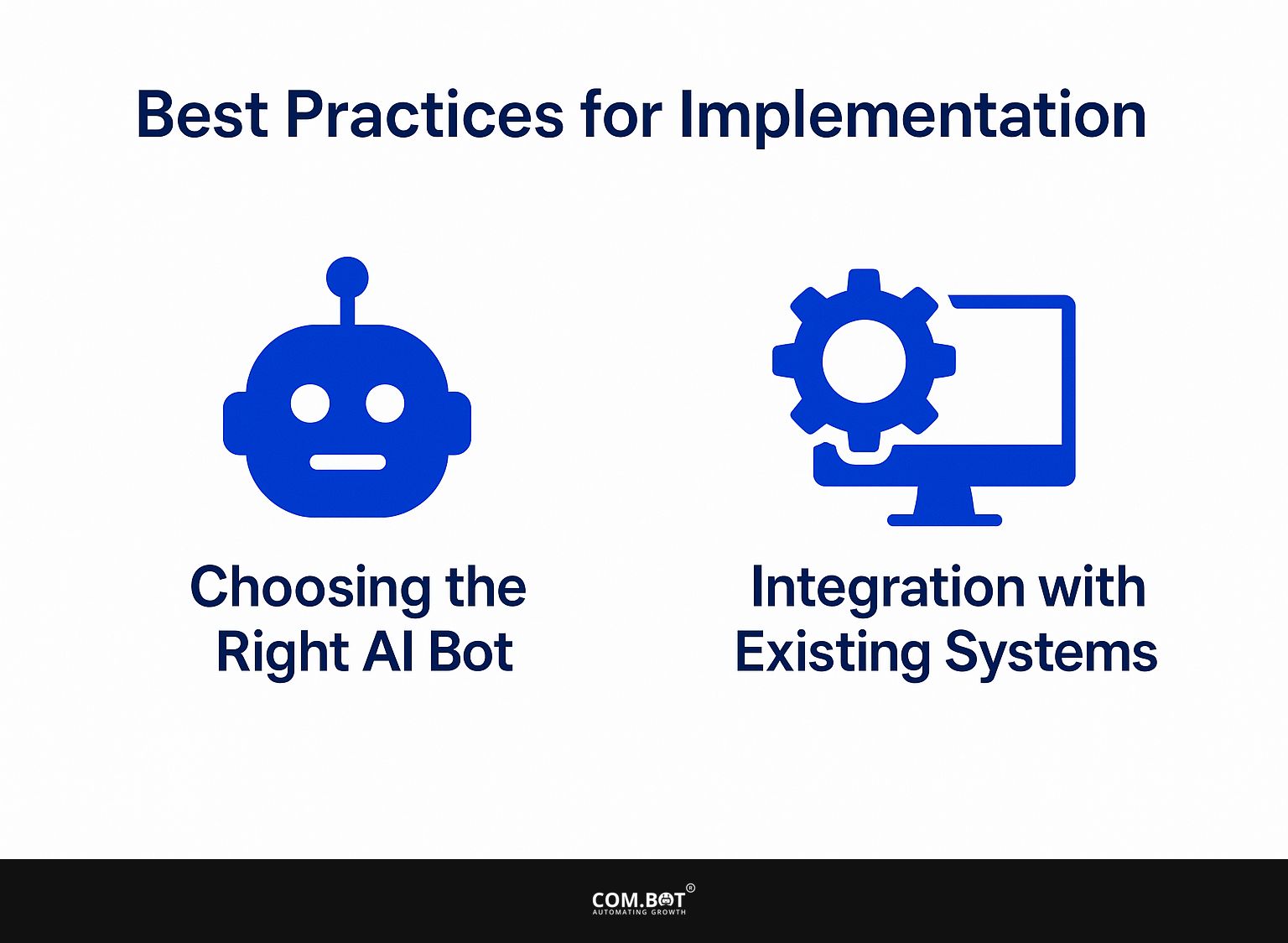
1. Choosing the Right AI Bot
Selecting the right AI bot involves assessing various factors, including features, integration capabilities, and user interface design that meets specific appointment needs. Begin by checking how well the chat interface works. Make sure it can process regular language and grasp what the user wants.
Look for bots that support scheduling conflicts seamlessly-this keeps your planning efficient. Check for integration with tools like Google Calendar or Zoom for smoother workflows.
For example, Calendly is simple to use for scheduling and integrates well with other tools, while Acuity Scheduling offers many setup options, making it perfect for businesses that offer services.
Chatbot.com, on the other hand, provides excellent automation capabilities. Choose based on your specific requirements and workflow needs.
2. Integration with Existing Systems
Connecting AI bots with current systems like CRM and calendar platforms can greatly improve how appointments are managed. To effectively integrate AI bots, begin by selecting compatible platforms; for instance, Zapier can bridge your CRM and calendar apps.
Next, use their APIs to keep data in sync-set up alerts for events like new appointment requests in your CRM. Use chatbot programs like Drift or Intercom to handle the first booking questions automatically.
Regular testing of these connections is important to keep systems talking effectively and to provide up-to-date appointment slots. This helps improve the experience for users and cuts down on scheduling issues.
Optimizing User Experience
Improving how users schedule appointments is important because it affects how happy and engaged customers are. As mentioned in our discussion on AI Bots for Customer Support, leveraging AI can significantly enhance user satisfaction by streamlining the scheduling process.
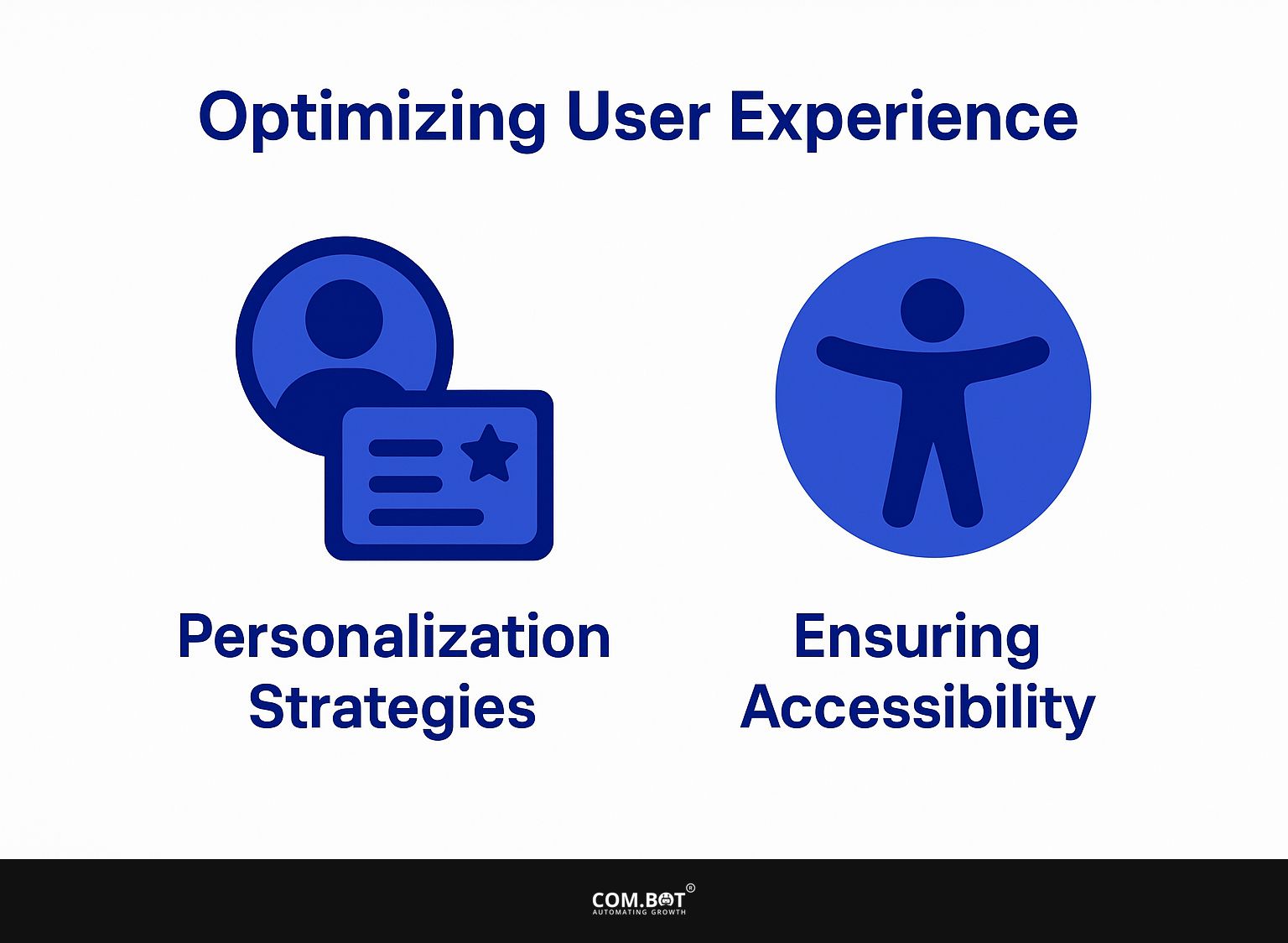
1. Personalization Strategies
Using specific methods in AI bots can greatly improve how users interact, resulting in higher user participation and better customer loyalty. To tailor user experiences, use machine learning tools such as TensorFlow or Scikit-learn to examine user preferences.
For example, gather information from previous meetings and feedback to give personalized appointment suggestions. You can divide users by their online actions or past reservations, sending them messages or deals that match what they like.
Include systems where users can rate suggestions to improve the personalization model as they use it. Make sure each user’s experience is simple and fits their needs.
2. Ensuring Accessibility
Ensuring accessibility in appointment scheduling tools is essential for accommodating all users, including those with disabilities. Ensure screen readers function properly so users can move through the website easily.
Tools like Calendly and Acuity Scheduling comply with W3C standards, ensuring that all elements are easily interpretable by screen readers.
Add keyboard shortcuts to help users move around without a mouse, which can greatly benefit those with mobility issues. Regularly testing your tools with real users can help find accessibility problems, leading to ongoing improvement suited to various needs.
Monitoring and Evaluation
Regular checks and reviews of AI bots used for setting up appointments are essential to make sure they align with business targets and satisfy what users want.
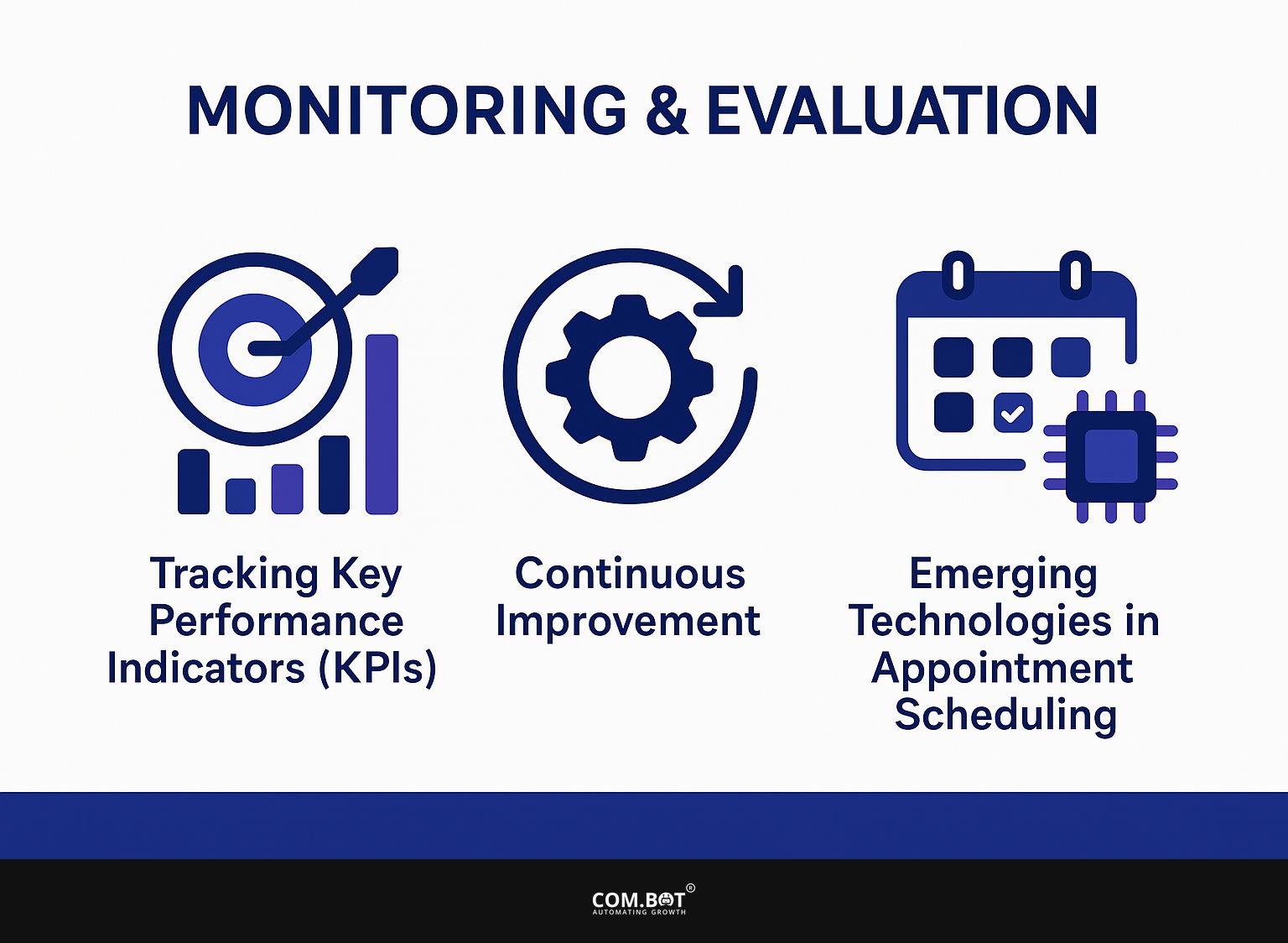
1. Tracking Key Performance Indicators (KPIs)
Tracking key performance indicators (KPIs) such as booking rates and user satisfaction scores is essential for evaluating the success of AI scheduling bots. To do this effectively, focus on key metrics including user engagement rates, no-show statistics, and average response times.
To understand user interaction, tools like Google Analytics can show how frequently users engage with the bot. It’s important to track how frequently appointments are missed. If a bot does not complete a booking, use services like Twilio to send follow-up messages automatically.
Using Google Data Studio to display these metrics makes it easier to spot patterns and areas that could be better, allowing you to make decisions based on data to improve your scheduling methods.
2. Continuous Improvement
Using a plan for ongoing improvement helps businesses update their AI scheduling bots based on user feedback and performance data. To put this plan into action, begin by gathering user opinions often through surveys and direct talks.
Use analytics tools like Google Analytics or Mixpanel to track bot performance metrics, such as response times and user engagement. For instance, if a specific command results in high drop-off rates, adjust the bot’s script accordingly.
Case studies, like tech firms that modified their bots based on monthly performance reviews, show that these adjustments can lead to a 20% increase in user satisfaction over six months. Regular updates keep your AI tools useful and current.
3. Emerging Technologies in Appointment Scheduling
New technologies, like telehealth services and better AI usage, are going to change how we schedule appointments in a big way. Telehealth platforms like Doxy.me and Zocdoc provide easy scheduling, helping patients stay involved.
By using AI, healthcare providers can use tools like Qventus or Zocdoc to predict when patients might miss appointments and adjust their schedules instantly.
For instance, a hospital implementing Qventus reported a 20% increase in on-time appointments. Chatbots can facilitate reminder systems, reducing missed appointments by up to 30%. These technologies make processes faster and better, leading to happier patients and smoother operations.
Frequently Asked Questions
1. What is appointment scheduling with AI bots and how does it work?
Setting up appointments with AI bots involves using artificial intelligence to handle appointment scheduling automatically. This technology is able to interact with users and understand their preferences, availability and appointment requirements in order to suggest and confirm the best possible appointment time.
2. What are the benefits of using AI bots for appointment scheduling?
Using AI bots for appointment scheduling offers many advantages. They help save time and resources, cut down on mistakes, make customers happier, and do tasks more effectively. AI bots can also handle a large volume of appointment requests, freeing up human staff to focus on other important tasks.
3. How do AI bots make sure appointment scheduling is correct?
AI bots use advanced algorithms and machine learning to continuously improve their accuracy in appointment scheduling. They can learn from previous interactions and change plans as needed, leading to better and more effective scheduling.
4. Can AI bots integrate with my existing appointment scheduling system?
Yes, AI bots can work smoothly with current appointment scheduling systems, making the change to automatic scheduling easy. This also means that any data collected by the AI bots can be automatically synced with the existing system, avoiding any data duplication or discrepancies.
5. Are there any security concerns when using AI bots for appointment scheduling?
AI bots use strong security methods to keep any data safe during the appointment scheduling process. This includes encryption, secure data storage and regular security updates to combat potential cyber threats.
6. How can AI bots improve customer experience during the appointment scheduling process?
AI bots are able to provide a faster and more convenient experience for customers by eliminating the need for back and forth communication and long wait times. They are also available 24/7, allowing customers to schedule appointments at their convenience. This results in a better and smoother experience for customers.
